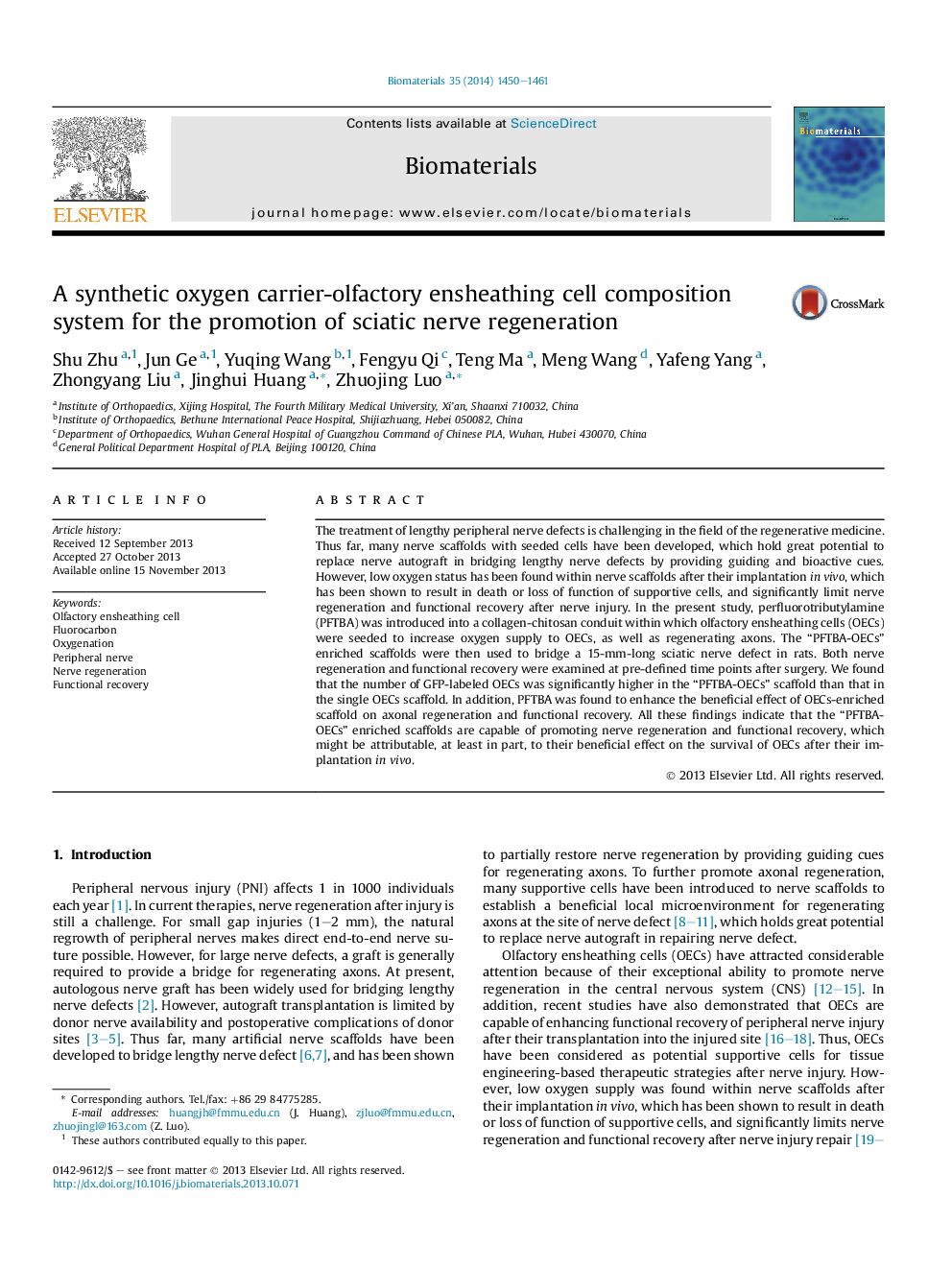| Article ID | Journal | Published Year | Pages | File Type |
|---|---|---|---|---|
| 10227428 | Biomaterials | 2014 | 12 Pages |
Abstract
The treatment of lengthy peripheral nerve defects is challenging in the field of the regenerative medicine. Thus far, many nerve scaffolds with seeded cells have been developed, which hold great potential to replace nerve autograft in bridging lengthy nerve defects by providing guiding and bioactive cues. However, low oxygen status has been found within nerve scaffolds after their implantation in vivo, which has been shown to result in death or loss of function of supportive cells, and significantly limit nerve regeneration and functional recovery after nerve injury. In the present study, perfluorotributylamine (PFTBA) was introduced into a collagen-chitosan conduit within which olfactory ensheathing cells (OECs) were seeded to increase oxygen supply to OECs, as well as regenerating axons. The “PFTBA-OECs” enriched scaffolds were then used to bridge a 15-mm-long sciatic nerve defect in rats. Both nerve regeneration and functional recovery were examined at pre-defined time points after surgery. We found that the number of GFP-labeled OECs was significantly higher in the “PFTBA-OECs” scaffold than that in the single OECs scaffold. In addition, PFTBA was found to enhance the beneficial effect of OECs-enriched scaffold on axonal regeneration and functional recovery. All these findings indicate that the “PFTBA-OECs” enriched scaffolds are capable of promoting nerve regeneration and functional recovery, which might be attributable, at least in part, to their beneficial effect on the survival of OECs after their implantation in vivo.
Keywords
Related Topics
Physical Sciences and Engineering
Chemical Engineering
Bioengineering
Authors
Shu Zhu, Jun Ge, Yuqing Wang, Fengyu Qi, Teng Ma, Meng Wang, Yafeng Yang, Zhongyang Liu, Jinghui Huang, Zhuojing Luo,
